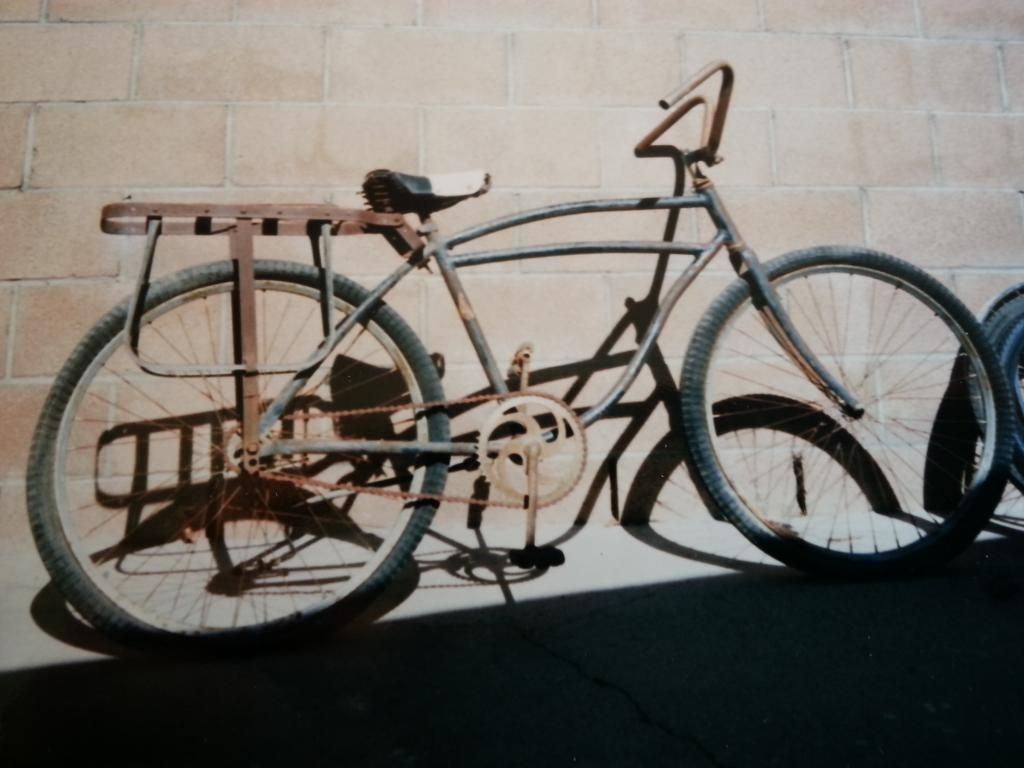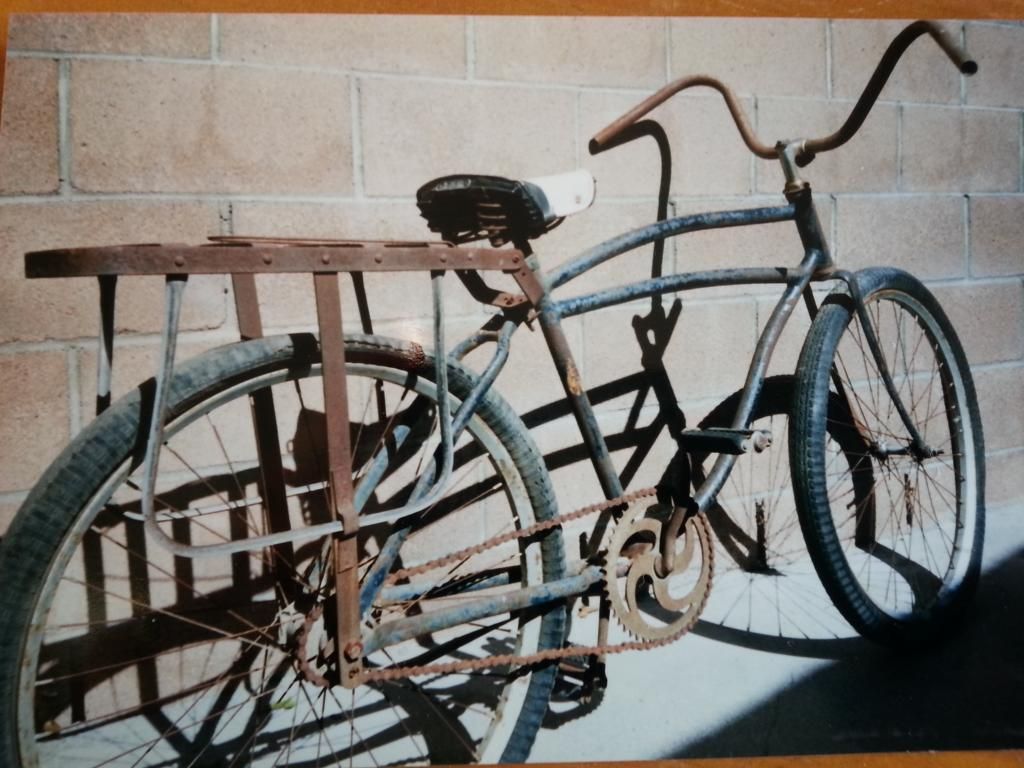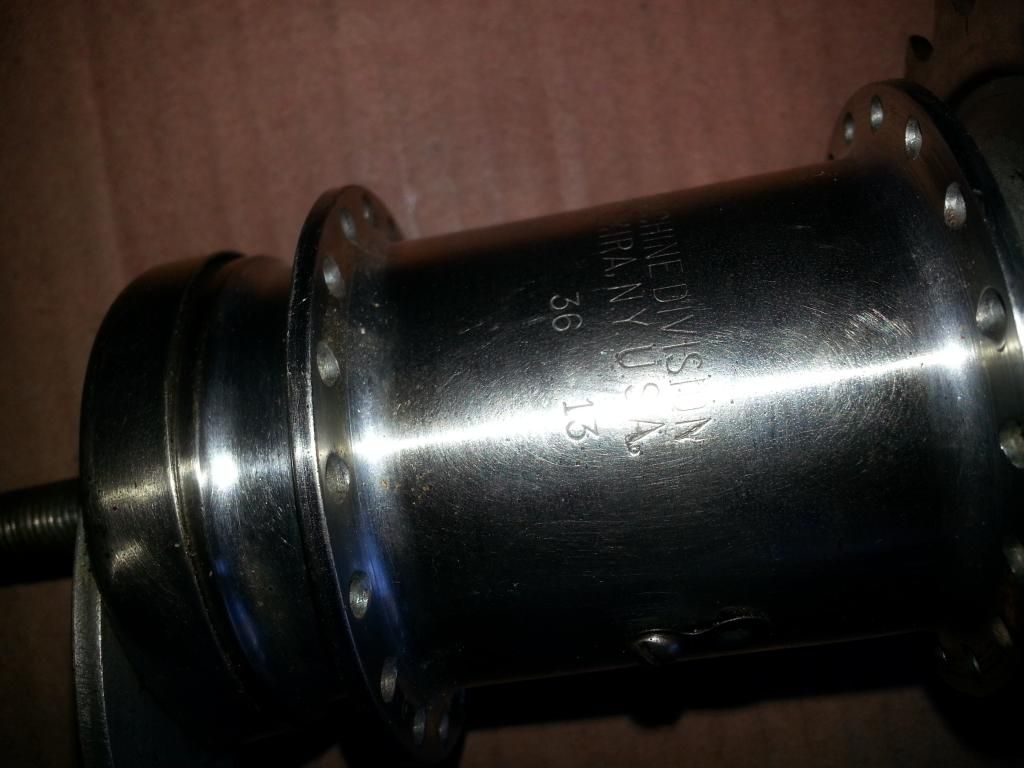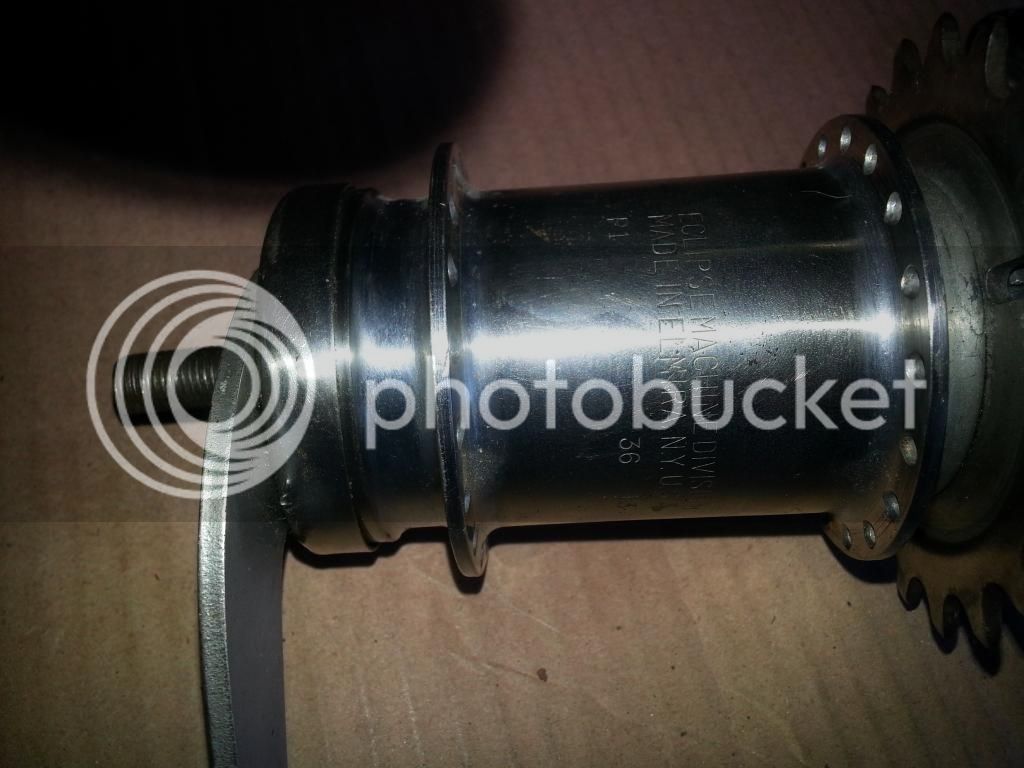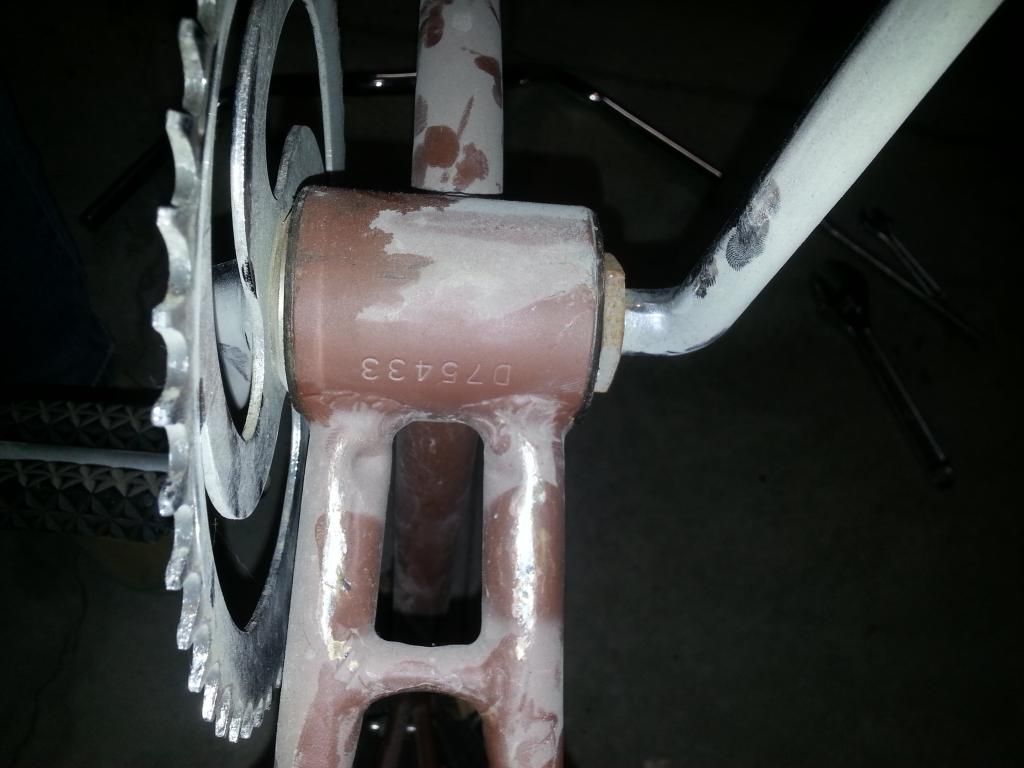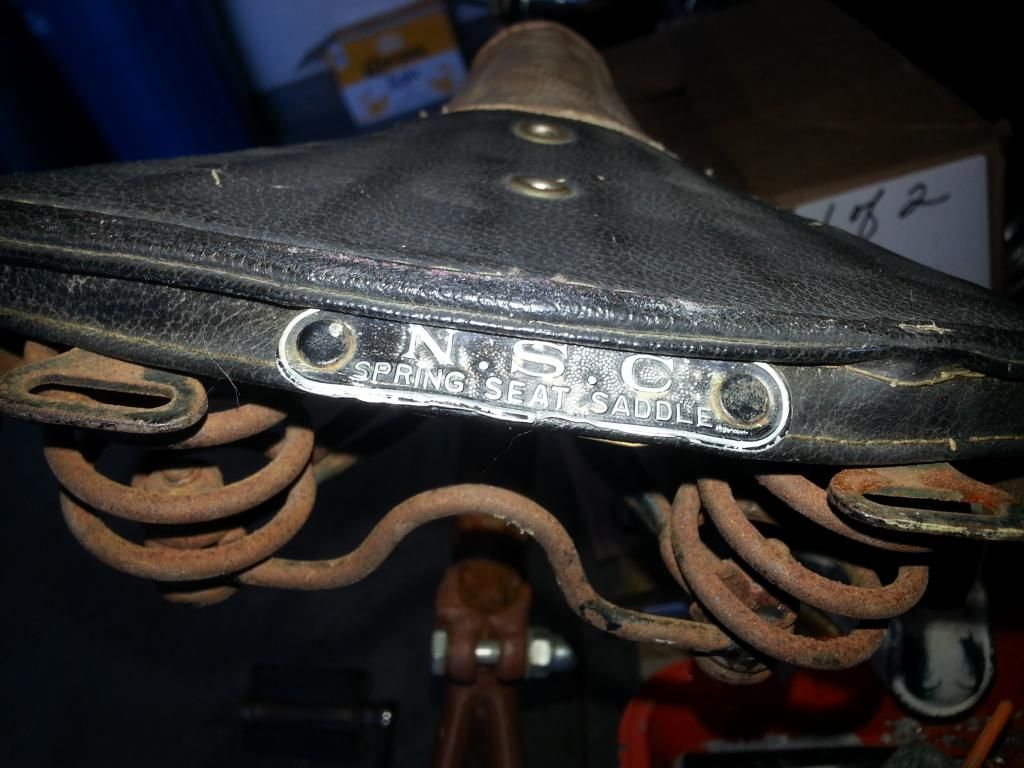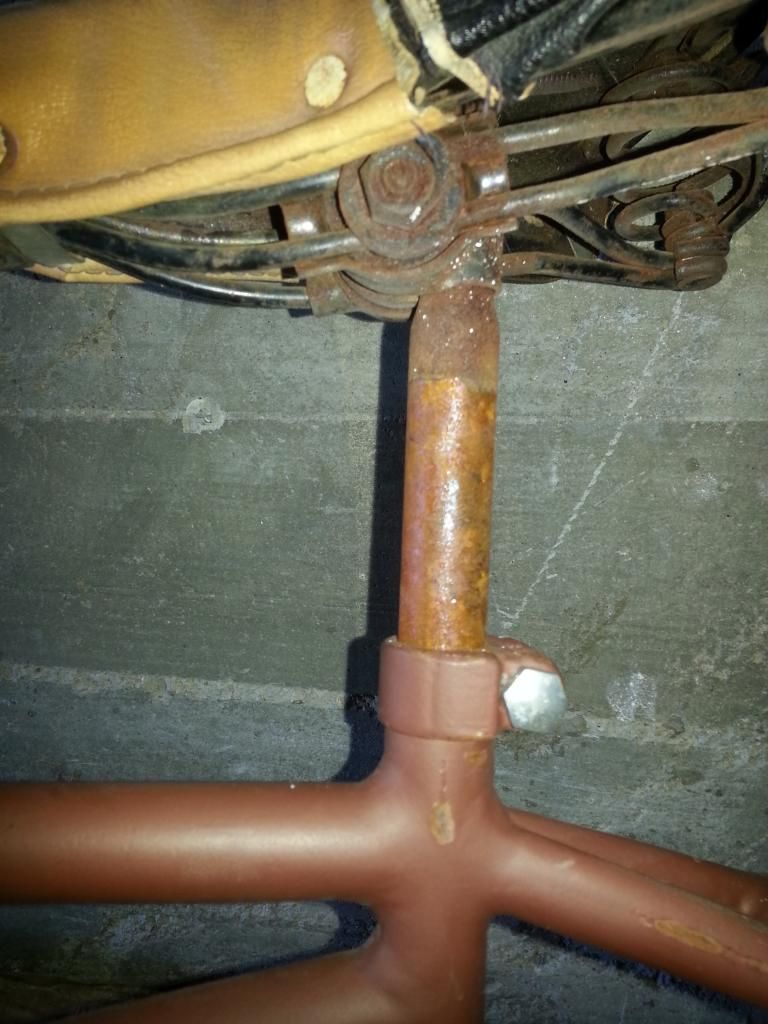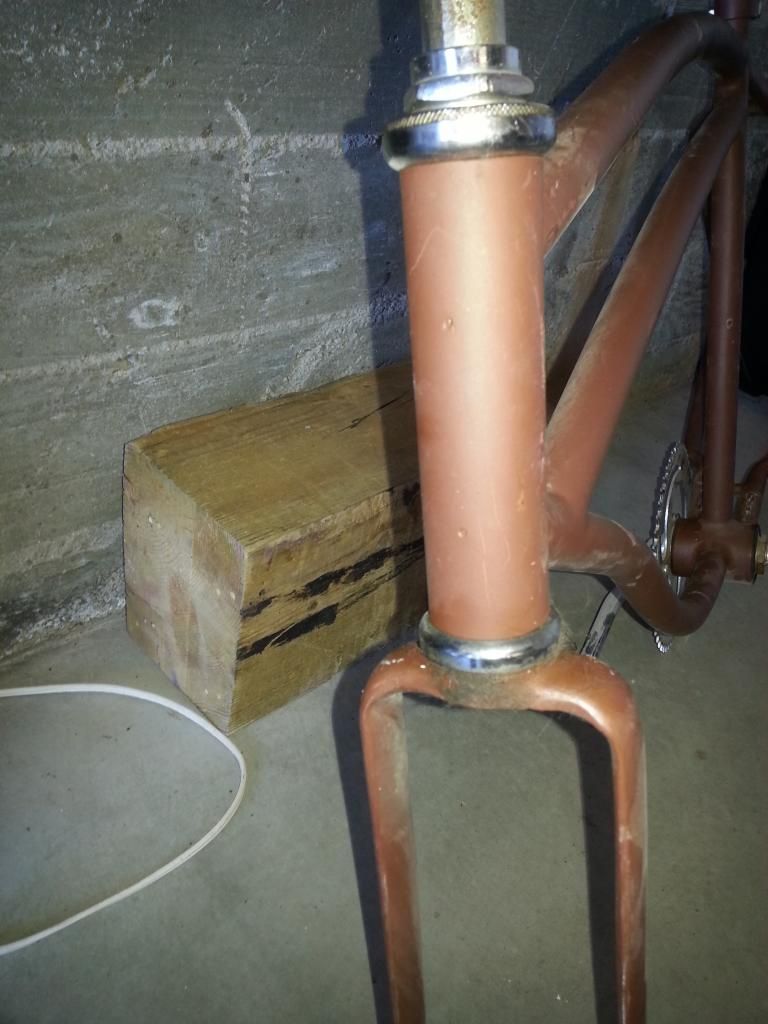Wow, what a survivor. Need more detailed shots of dropouts, BB, fork, headbadge area, etc. The numbers on the Morrow hub have a date code.
The frame probably has a serial number on the bottom bracket. If not, look on the rear dropouts.
Most Morrows were skiptooth when new. The date might help establish if the drivetrain was updated. This bike has clearly been modified by the previous owner/s on several levels. The cranks may not be original if the drivetrain was updated but then again they might. Are they "doglegged?" Looks like they might be. Check the spindle on the cranks for any numbers or letters.
Whomever used this as a paperboy bike got tired of lugging around the heavy fenders and also seems to have very very likely changed the bars and neck. Almost certainly a replacement seat, too. Paper routes were started by the older brother and passed down to the kid brother BITD, and the bike went with the job often, or was sold to the new kid down the block who took over the route.
It may be a pre-war CWC... hard to tell yet. Need more pics. Look closely to see if it ever seemed to have a chain guard or not. Some brands didn't have one on economy models and a lack of any paint marks or tabs/holes for mounting a chain guard might be a clue.
Schwinn bicycles were sold at a dealer's shop and dept store brands were easier to get out in the countryside. The fact that the bike was registered with the cops makes it more likely a city or suburb bicycle, and of course if you are way out in the country it becomes unfeasible to have a paper route.
If I had to make a guess I'd say this bike started out life as a dressed up prewar bike (late 1930s) and soon fell into the hands of a junk man, and then had a second life as a used purchase when some postwar kid got a neighborhood paper route and slowly modified the bike for himself and possibly even his kid brother. The 1960s "schwinn approved" looking seat makes me think this thing had a long and hard working life. Obviously I'm just guessing, however.
One thing I'd say though with some confidence is that for the first three, maybe even four decades of it's life I am willing to bet this bike was ridden as much or more than it was stored. (That is until your lazy butt found it, lol. what have you been waiting for?)
Paperboy bikes were ridden seven days a week, rain or shine, sleet or snow. That's a testament to the mighty Morrow and some union welding shop in the iron belt. "Made by Union labor on American soil" is not something you can say too often anymore. Ride it with pride knowing that a lot of struggle went into that fact.
Think long and hard about each foreign part you put on this to get it on the road again. Why won't you have better choices available? Ask your senator.
Cool bike - deserves some lovin' which it seems to be getting, if slowly. Good luck with the project and keep posting!
